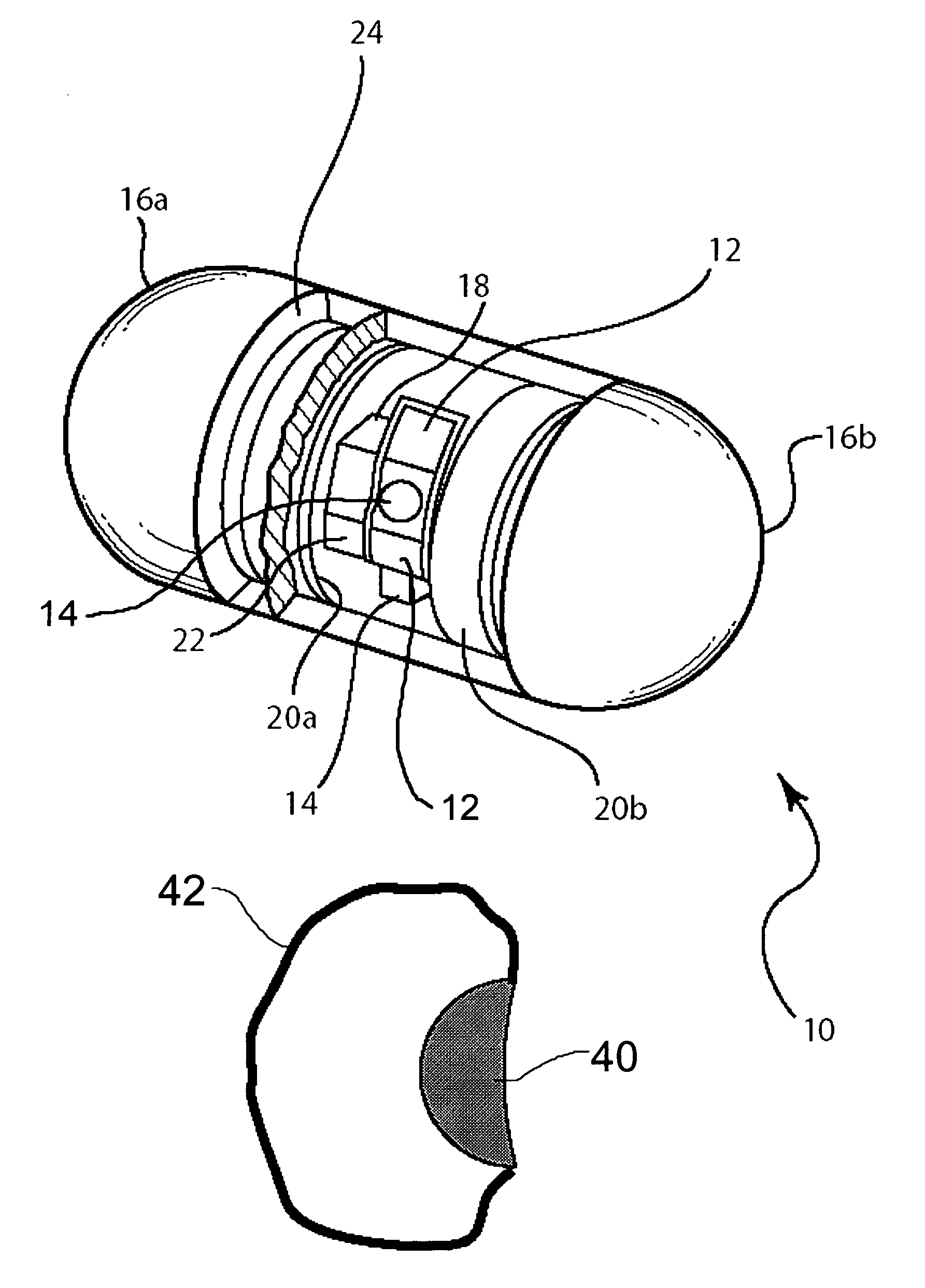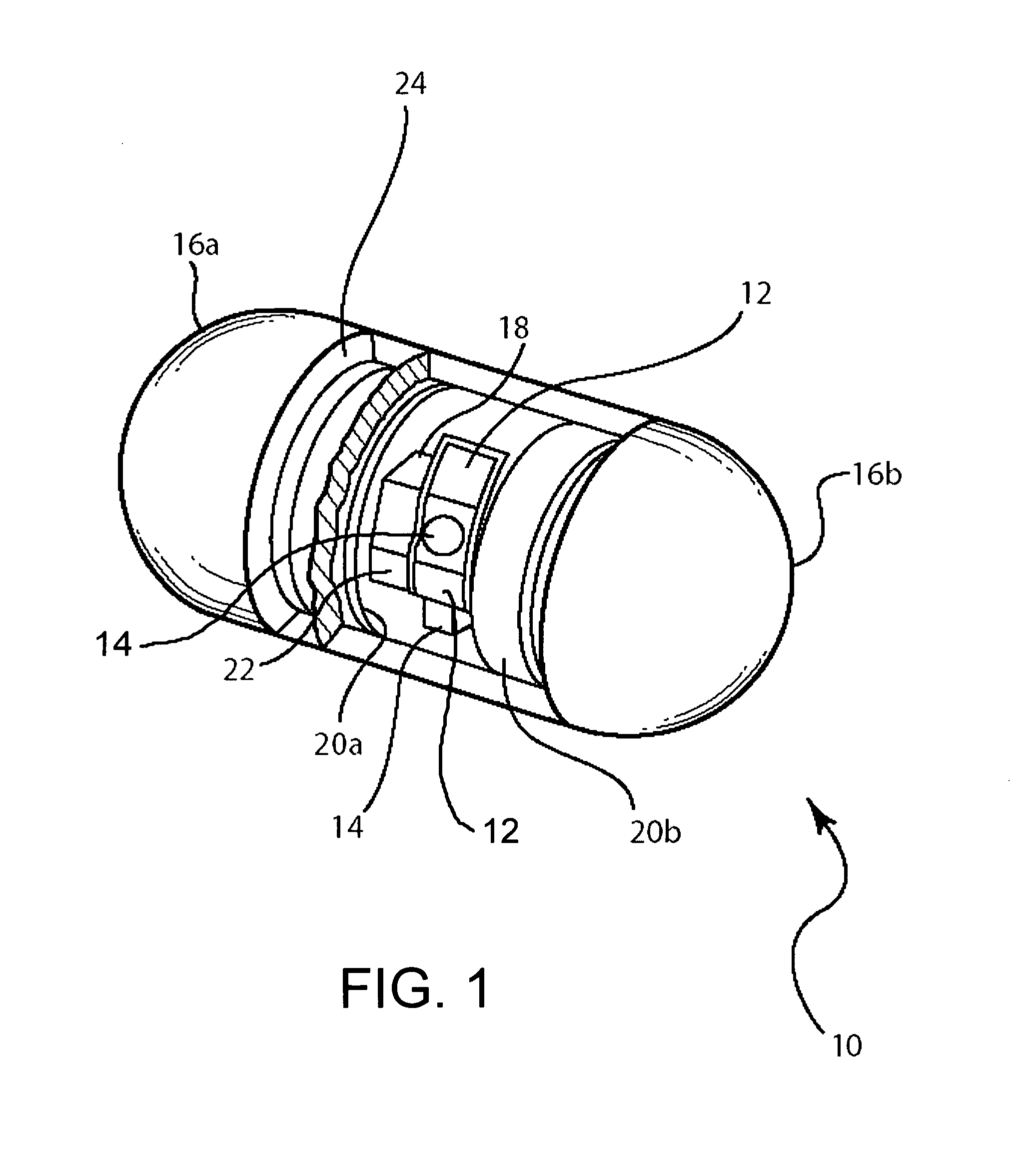Self-stabilized encapsulated imaging system
a self-stabilized, imaging system technology, applied in the field of gastrointestinal organ imaging, can solve problems such as preventing meaningful interpretation of acquired images
- Summary
- Abstract
- Description
- Claims
- Application Information
AI Technical Summary
Benefits of technology
Problems solved by technology
Method used
Image
Examples
Embodiment Construction
[0018]Briefly, the present invention includes an apparatus and method for imaging gastrointestinal organs from which meaningful images may be generated. The apparatus hereof comprises a wireless imaging capsule having an outer component that dissolves or breaks in the targeted organ, thereby permitting swelling of expandable materials disposed on each end of the capsule. As a result, the capsule is oriented and self-stabilizing against tumbling. At about the time of the expansion process, during this process or just afterwards, imaging components in the capsule are activated. These may include light emitting diodes (LEDs) for illuminating the interior of the organ of interest, and image sensors. The oriented and stabilized wireless capsule endoscope can then provide images from which details of the inner walls for organs having large lumens can be reconstructed. Although the colon has been chosen as an example of a large-lumen organ in the following description, application of the p...
PUM
 Login to View More
Login to View More Abstract
Description
Claims
Application Information
 Login to View More
Login to View More - R&D
- Intellectual Property
- Life Sciences
- Materials
- Tech Scout
- Unparalleled Data Quality
- Higher Quality Content
- 60% Fewer Hallucinations
Browse by: Latest US Patents, China's latest patents, Technical Efficacy Thesaurus, Application Domain, Technology Topic, Popular Technical Reports.
© 2025 PatSnap. All rights reserved.Legal|Privacy policy|Modern Slavery Act Transparency Statement|Sitemap|About US| Contact US: help@patsnap.com



